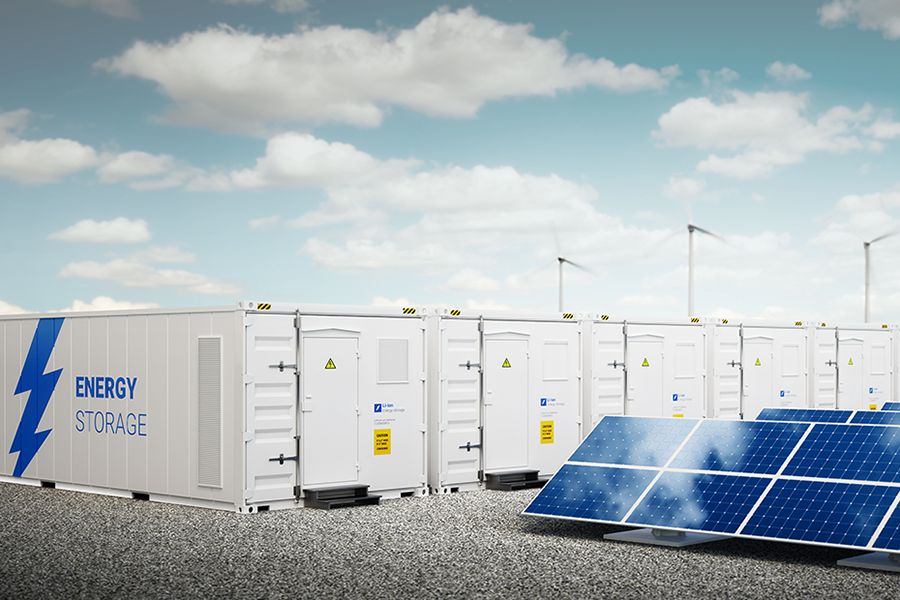Ostfildern-Kemnat, Germany. Redox flow batteries are elaborately constructed wet-cell batteries in which electrolytes, often based on vanadium, are circulated by means of pumps. The technology is seen as having great potential as a storage system for renewable energy from solar photovoltaic and wind farms or rooftop systems. However, the design of the battery stacks has been a real challenge so far as the aggressive electrolytes may cause stress on the materials.
Potting and sealing compounds from Wevo can withstand these conditions – as demonstrated by a series of tests conducted by the company in cooperation with the Fraunhofer Institute for Chemical Technology (ICT) in Pfinztal, Germany. As a result, the tested polyurethane-, epoxy- and silicone-based Wevo resins and adhesives permit the battery stacks to be designed with greater freedom and make an important contribution toward the technology becoming fit for mass application. At the “2021 International Flow Battery Forum”, WEVO-CHEMIE GmbH presented the results in detail.
The increasing use of renewables means that more and more electricity being generated – whether by large wind and solar farms or by small and medium-sized privately owned PV installations – has to be temporarily stored decentralized. Since the lithium-ion batteries frequently used for this purpose suffer from a number of disadvantages – among other things with respect to the storage of energy over longer periods of time or decreasing storage capacities at low temperatures or over the course of use – alternative technologies are being sought. What are known as “redox flow batteries” or wet-cell batteries are already in use.
Although their installation is more complicated as it involves manual work, they nevertheless enjoy a range of advantages over lithium-ion batteries that are particularly positive when it comes to the large-scale storage of electricity generated by wind or solar parks. On the one hand, their power and capacity can be scaled independently. What’s more, the technology is safe because the electrolyte they contain cannot catch fire or explode. A “thermal runaway”, i.e. overheating, can also be ruled out. Furthermore, the batteries usually have a long service life of 15 to 20 years and can be easily recycled later, because recovery and reprocessing of the active substances they contain are readily feasible.
Wevo products pass the endurance test
In cooperation with the Fraunhofer ICT, Wevo has tested the resistance of selected 2-component reaction resins based on polyurethane, epoxy and silicone in a sulphuric acid electrolyte containing vanadium. To this end, the research team stored the respective test samples for 135 days in different oxidation levels, including the especially aggressive V5+ level.
At the end of this period, the condition of the test samples was examined to determine any changes in Shore hardness, weight and surface. The latter was done with the aid of a light microscope. In addition, the transparency and colour of the electrolytes were also evaluated. The findings: neither the test samples nor the electrolytes showed any significant changes. The materials tested can therefore be considered to be resistant in the highly aggressive sulphuric acid electrolyte and vanadium in the various oxidation levels.
WEVOSIL 28001, WEVOPUR 9064 B/30 with WEVONAT 507 and WEVOPOX 32703 with WEVODUR 5009 can be used in redox flow batteries in different ways. By using them as sealing and bonding materials, they can replace the rubber and silicone seals that have been used up to now. This creates more freedom in the design of the battery stacks. In addition, they seal the bipolar membranes inside the battery securely and positively and thus protect the components and connecting bars against corrosion. In case of a complete encapsulation of the battery stack the technology is a safe option for home storage applications too, as the user is protected from the corrosive electrolyte.
Image source: © malp – stock.adobe.com
